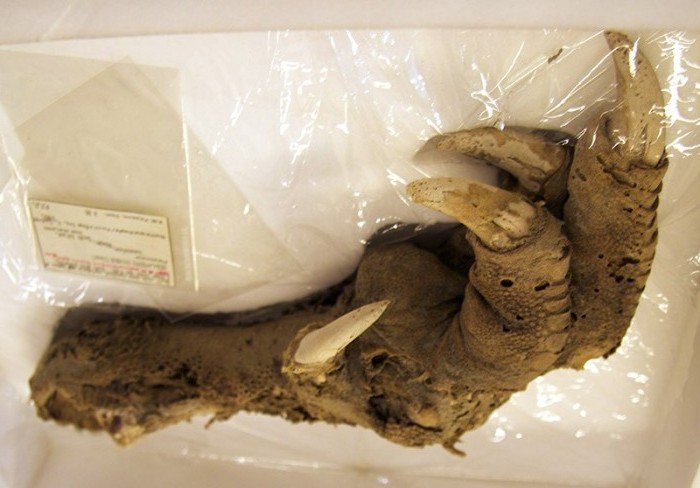The scientific community is abuzz with excitement over a remarkable discovery: the foot of a real dinosaur belonging to a species known as Megalapteryx.
What makes this find truly extraordinary is not only the preservation of the skeletal structure but also the remarkable condition of the dinosaur’s skin, which is considered the best-preserved dinosaur tissue to date.
Megalapteryx, a lesser-known species of dinosaur, has garnered newfound attention due to this unprecedented discovery. The remarkably well-preserved foot offers researchers a unique opportunity to study the anatomy and physiology of this ancient creature in unprecedented detail.
The pristine condition of the dinosaur’s skin provides invaluable insights into the physical appearance and characteristics of Megalapteryx. Scientists hope to glean information about its texture, coloration, and even potential adaptations for survival in its prehistoric environment.
Furthermore, the discovery of such well-preserved tissue opens up new avenues for scientific inquiry and research. By studying the cellular structure and molecular composition of the dinosaur’s skin, researchers may unlock secrets about the biology and evolutionary history of Megalapteryx and its relatives.
This groundbreaking discovery serves as a testament to the remarkable potential of paleontology to uncover the secrets of Earth’s distant past. As scientists continue to analyze and study the foot of the Megalapteryx, we can only imagine the insights and discoveries that lie ahead, reshaping our understanding of dinosaurs and the world they inhabited millions of years ago.